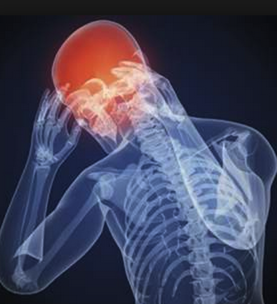Mental Health issues from a Mild Traumatic Brain Injury? Be aware

 We all know about it as having a concussion, a head impact from playing football or any other contact sport that puts shock / pressure on the brain.
We all know about it as having a concussion, a head impact from playing football or any other contact sport that puts shock / pressure on the brain.
The long term effects of it are yet to be fully understood, yet the research lends itself to reasons to be concerned. Here is some very useful information from a recent Psychiatricadvisor.com article:
[During the last decade, medical science has elucidated a myriad of expressions of mild traumatic brain injury (mTBI), and shown that in some cases, there is the presence of cellular and ultrastructural alterations. mTBI, also known as a concussion, is expressed in how neurons and their supporting cells utilize their energy substrate, glucose, and this impairment is termed “metabolic vulnerability,” implying that sustaining a second impact, while still symptomatic, is detrimental to successful recovery or could lead to long-term effects.
Most instances of concussions are self-limited, and resolve within the first week. However, there is the chance that in about 10% of cases, a more prolonged clinical course will transpire, constituting post-concussion syndrome (up to 8 weeks post-injury), or the prolonged post-concussion syndrome (9 weeks and longer). Concussion symptoms usually consist of the following: Headache, memory loss, dizziness, balance abnormalities, sleep disturbance, visual abnormalities, poor school performance, and others.
Emerging research is now suggestive that head impacts may commonly occur during contact sports in which symptoms may not develop and there are no outward or visible signs of neurological dysfunction. These impacts are thus not recognized at the clinical level. This evidence includes biophysics data, advanced neuro-imaging findings, and forensic analyses of the brains of former football players who did not have a diagnosis of concussion during their playing career, as well as in laboratory animals subjected to mild traumatic forces.
The potential relationship between trauma to the brain and long-term neurodegeneration was implied until dementia pugilistica (DP) was defined in 1928 by Harrison Martland, who was the medical examiner in Essex County, New Jersey. He identified changes in the brains of former boxers, consisting of both gross and microscopic alterations.
DP is believed to occur in approximately 20% of former professional boxers. More recently, it became apparent that what was considered even “mild” TBI could be associated with degeneration of projecting axons to the brainstem. Jennian F. Geddes, MD, now retired but formerly of the University of London, and colleagues discovered that abnormal accumulations of the major brain structural protein tau could be found in humans as a consequence of repetitive head injury.
More than 70 years after the discovery of DP, the neuropathologist Bennet Omalu described the first cases of Chronic Traumatic Encephalopathy (CTE) in modern athletes, primarily in former professional football players. During the last decade, the symptom complex and clinical course of CTE has emerged. However, since most cases were discovered due to their symptomatic condition and occupational exposure, the case series are highly selective and the incidence and prevalence are unknown.
My opinion is that perhaps 5-10% of former professional football players have CTE, or CTE-like changes, with nearly all cases being related to prolonged exposure to football. Individuals who participated in ice hockey, college and high school football, professional wrestling, and military service with exposure to multiple explosive blasts, have also been found at autopsy to have CTE changes.
Behavioral changes include amplified aggression, increased impulsiveness, impaired judgment, and risk-taking acts. Most often, a six-to-12-year latency period following retirement from contact sports is then associated with a failure in business, financial, and marital relationships, homelessness, drug and/or alcohol abuse, depression, mild cognitive impairment, and dementia.
More than half of CTE sufferers commit suicide. Occasionally, violent behavior, homicide, and explosive outbursts may occur. Robert A. Stern, PhD, of Boston University, reported in 2013 that CTE can be considered in two major clinical presentations, with one group whose initial features developed at a younger age involving behavioral and/or mood disturbance, and another group whose initial presentation developed at an older age and involved cognitive impairment.
There have been numerous positive changes in recent years involving contact sports, particularly football, which have resulted in greater safety for all participants. These include limiting contact in practice, eliminating head-to-head hits in youth practice drills, rules changes to penalize and prohibit egregious cranial hits, and improvements in helmet design.]
Bottom Line:
The time to better understand the relationship of head injury in contact sports to long term mental health problems is now.
We know that there are many putting forth efforts to better develop safer helmets, more needs to be done to educate all of us.
It is important to recognize that what looks like a short term impact type injury doesn’t lead to a long term mental health problem that could have been avoided or reduced if better equipment and better diagnosing had been implemented. Be safe.


